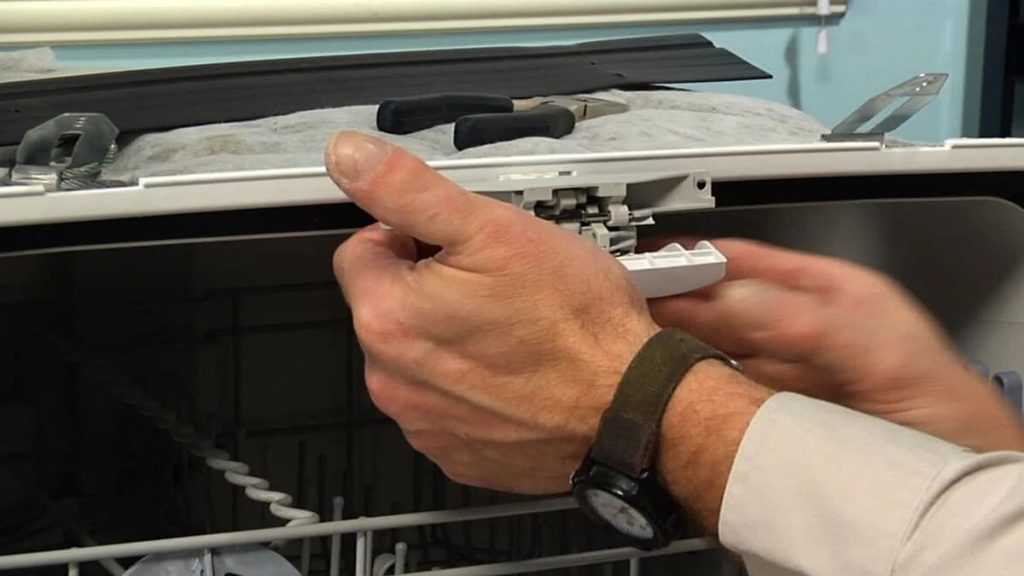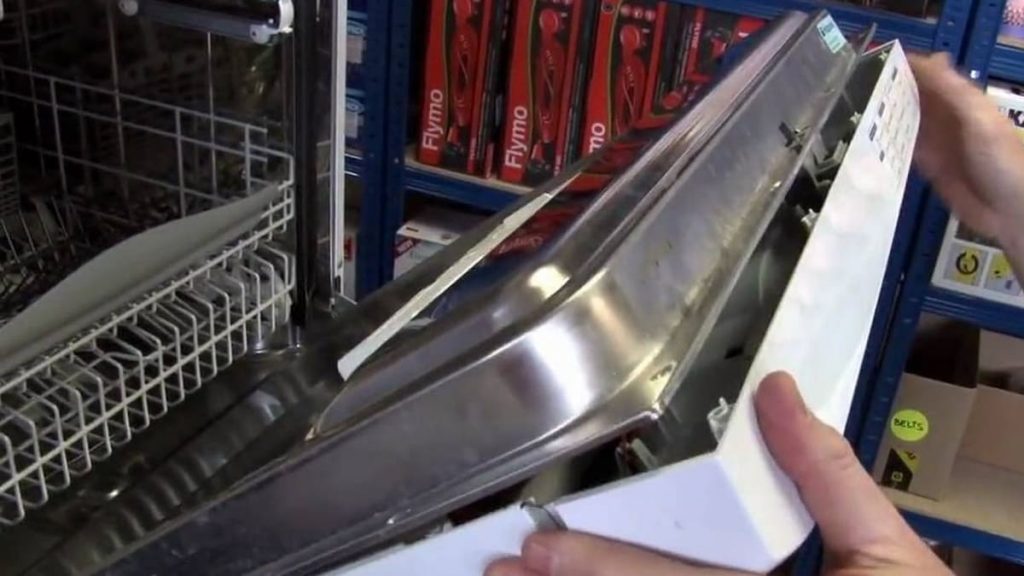To start the dishwasher, it is usually enough to use only one button, a maximum of two. But if there is a problem with closing the door, the machine cannot be started. It’s one thing when the user simply forgot to close it. And a completely different situation arises when it does not close in principle.
If the plastic tank is misaligned or incorrectly installed, the door will not close properly. The same thing happens when the door latch fails. The same problem will overtake the owner of the device if the shelf at the top or bottom is not installed correctly, or if the door latch is displaced.
Fortunately, the reasons why the dishwasher door might not close are not all that complicated. Therefore, it is not difficult to eliminate them and return the unit to working capacity. This article will focus on common problems.
Incorrect installation or misalignment of the tank
To ensure proper operation of the dishwasher, you must first install it correctly. Namely – put on a flat surface so that there is no tilt to one side. This principle applies to all dishwashers, however, products with plastic-based tanks are considered the most sensitive, and the risk of installing them incorrectly is maximum.
The main problems that arise with an improperly installed dishwasher are difficulties with the flow of water and closing the door. In addition, a properly delivered product may also encounter certain problems, but they only become apparent after many years of use.
For a long time, the door simply gradually shifts, which ultimately leads to problems with closing it. This is usually due to the expansion of the plastic bath and contraction from the influence of hot water in the mechanism itself during dishwashing.
If we assume that the unit is brand new, we can conclude that it was installed incorrectly. If indeed mistakes were made in this process, you just need to remove it from the kitchen. To do this, first there is a disconnection from the power source and water to prevent the likelihood of injury or electric shock. Next, it remains to clean the floor directly under the device and make sure the surface is even.
So that the user can be sure of this, he can apply a level. Then you can put the unit in its “legitimate” place. If the problem is precisely in the displacement of the door, then all that needs to be done is simply to return it to its original position. To do this, you will have to use the simplest tools in the form of a screwdriver, a wrench. Only with this approach can you tighten the door qualitatively.
Door latch failure
It is worth noting that it practically does not have any differences from any other latch in the house. Its key task is to keep the door closed. However, the latches installed in the dishwasher have a wider range of functions.
Some makes and models have electric latches. They automatically lock the door after the start of the wash cycle, and also determine whether it is really closed, and how correctly. If it is detected as open or ajar, it may interfere with the start of the unit. Some machines have built-in damage protection mechanisms.
The door latch is an electrical element, it is not surprising that over time it fails. If the machine has been used for a long period of time, it may simply have worn out. There was probably damage due to frequent and forceful closing of the door. In any case, a non-working latch can interfere with the closing of the door, and the machine simply will not be able to start the washing cycle.
Replacement can be simple or difficult, it all depends on the design features of a particular model. Regardless of the brand, you can find the latch on the inside panel of the door, where it comes into contact with the body. Before you begin, you need to deactivate the power and water supply. Doing so will help prevent injury or electric shock and ensure safe operation of the system.
The problem may lie in the difficulty of accessing the latch. In some models, you may even have to remove the entire control panel due to the latch being inside the case. Some products also require the access panel to be opened before the user can reach the latches. In any situation, it is advisable to refer to the user manual or see the technical sheets.
After that, it remains to unscrew the latch and remove the connector. After that, it remains to insert the latch again and screw it into place. Then you can reconnect the electrical connector. After installing the new latch, you can reverse the process and replace any access and control panels that were previously removed.
Impossibility of correct installation of shelves from above or below
It should be understood that almost any dishwasher is quite well designed and works extremely accurately. Its interior is designed to accommodate the maximum number of plates and dishes in a small space. However, the device does its job and shows that each item can be washed with the utmost care.
The machine often works efficiently due to the correct movement of the baskets inside it. If something could cause the racks to be installed incorrectly, this could lead to problems with their use. It is possible that under these conditions the door may not close properly if the shelf is not properly installed. Even if one of the racks does not protrude much, this will still be enough so that the door cannot close completely. Since the machine automatically detects the fact that the door is not closed, it ensures that any washing operations are not started to prevent damage or injury.
For maximum safety, you should always disconnect the device from the power source and water before working on it. This will reduce the risk of injury or electric shock and result in safe operation. Assuming that mistakes were made in the installation of the shelves, this is the best thing you can do.
Having bought a dishwasher, it is worth keeping the user manual at hand, as well as technical sheets. As needed, you just need to contact them. To do this, just remove the racks from above and below, and then follow the reinstallation guide. While the racks are not in place, it is recommended to inspect the support rails from the inside to make sure there are no foreign objects.
Door latch offset
It is the element that gives the latch a place to sink into. If everything works correctly, the door can fit as tightly as possible, and there is no risk of it shifting, of course, if the user does not intentionally open it.
In order for a door latch to function properly, it needs to be perfectly aligned with another door latch. Only under this condition will they be able to work correctly and the door will remain closed. In addition, the door latch allows you to keep it closed throughout the entire time, which guarantees the full completion of the washing cycle.
Any repair work must begin with power off to minimize the chance of injury or electric shock. Usually the door latch is located in the center, in the place where the door comes into contact with the body part. When it is open, the latch can be inspected up close to check for misalignment or other difficulties.
Removing the element requires removing the screws or bolts holding it in place on the pins. As soon as the door latch is released, it becomes much easier to remove it. For this, a special slot is used that holds it in place. After that, it remains only to take a new latch and slide it back. Only then can the user proceed with the mounting pins.
To make sure that the element is properly aligned with the door, you need to check it by opening and closing several times, and also making sure that the seal is formed on all sides.




